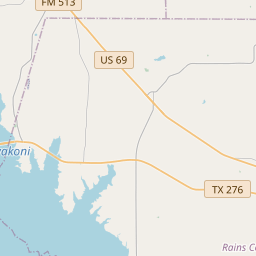Emory Rains
Historical marker location:






(May 2, 1800 - Aug. 11, 1878) Texas pioneer Emory Rains served as an alcalde under Mexican rule and as a counselor in the East Texas Regulator-Moderator War of the 1840s. As a senator in the Republic of Texas Congress, he helped pass the Homestead Act. Rains also served in the 1845 Constitutional Convention and in the State Legislature, where he worked for the formation of this county, which was named in his honor. The Rains County Seat, Emory, was also named for him
As one of the most visible programs of the Texas Historical Commission (THC), historical markers commemorate diverse topics in Texas history, including: the history and architecture of houses, commercial and public buildings, religious congregations, and military sites; events that changed the course of local and state history; and individuals who have made lasting contributions to the state, community organizations, and businesses.
The city of Austin, the state capital, is known as the live music capital of the world. It is home to many music festivals, including South by Southwest (SXSW) and the Austin City Limits Music Festival.
The first settlers in Rains County arrived in the early 1850s, primarily from the southern United States. They were drawn to the fertile land and abundant water sources, such as the Sabine River and its tributaries. Agriculture quickly became the backbone of the county's economy, with cotton, corn, and livestock playing major roles.
The construction of the Texas and New Orleans Railroad in the late 1880s bolstered the county's growth, as it provided an important transportation link to nearby towns and markets. The railroad brought prosperity and new opportunities, leading to the establishment of the county seat, Emory. The town was named after Emory Rains and became a hub of commerce, education, and social activities in the region.
Despite the challenges posed by the Great Depression and the decline of agriculture in the mid-20th century, Rains County continued to thrive with the development of recreational areas and the growth of tourism. Lake Tawakoni, one of the largest lakes in Texas, was completed in 1960, which drew visitors and outdoor enthusiasts to the area. Today, Rains County remains a close-knit community, focused on preserving its history while embracing the opportunities of the modern era.
Rains County Timeline
This timeline provides a glimpse into the major events and milestones that have shaped the history of Rains County, Texas.
- 1870 - Rains County was established on June 9, 1870, named after Emory Rains, a Texas state legislator.
- 1871 - The first county officials were elected and the county seat was established in the city of Emory.
- 1873 - The first courthouse was built in Emory.
- 1878 - The Texas and Pacific Railway extended a line into Rains County, boosting economic growth.
- 1880 - The population of Rains County reached 3,901.
- 1892 - The second courthouse was constructed in Emory.
- 1913 - A fire destroyed the second courthouse, prompting the construction of the third courthouse.
- 1930s - The Great Depression brought economic struggles to Rains County.
- 1970s - The population of Rains County began to decline.
- 2001 - Lake Tawakoni State Park was established, providing recreational opportunities for residents and visitors.
- 2010s - The population of Rains County started to grow again, with increased interest in rural living and lakefront properties.